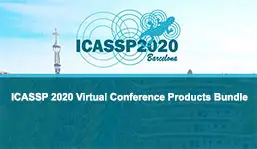Active Semi-Supervised Learning For Diffusions On Graphs
Bishwadeep Das, Elvin Isufi, Geert Leus
-
Members: FreeSPS
IEEE Members: $11.00
Non-members: $15.00Length: 15:25
04 May 2020
Diffusion-based semi-supervised learning on graphs consists of diffusing labeled information of a few nodes to infer the labels on the remaining ones. The performance of these methods heavily relies on the initial labeled set, which is either generated randomly or using heuristics. The first sometimes leads to unsatisfactory results because random labeling has no guarantees to label all classes while heuristic methods only yield a good performance when multiple recursive training stages are possible. In this paper, we put forth a new paradigm for active semi-supervised learning for graph diffusions. We rephrase active learning as the problem of selecting the output labels from a label propagation model. Subsequently, we develop two methods to solve this problem and label the nodes. The first method assumes there are only a few starting labels and relies on projected compressive sensing to build the label set. The second method drops the assumption of a few starting labels and builds on sparse sensing techniques to label a few nodes. Both methods have solid mathematical grounds in signal processing and require a single training phase. Numerical results on three scenarios corroborate our findings and showcase the improved performance compared with the state of the art.



